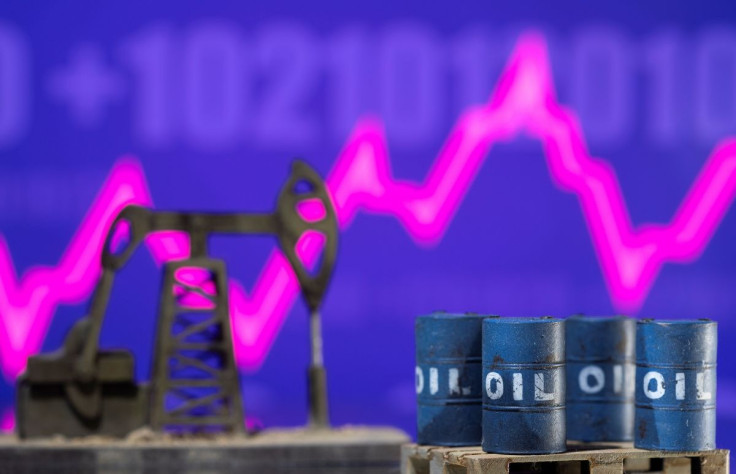Oil Extends Bull Run As EU Agrees To Ban Most Russian Oil

Oil prices extended a bull run on Tuesday after the European Union agreed to a partial and phased ban on Russian oil and China decided to lift some COVID-19 restrictions and the U.S. summer driving season kicked off.
Brent crude for July, which expires on Tuesday, rose $1.58, or 1.3%, to $123.25 a barrel by 12:30 p.m. ET (1630 GMT), after earlier rising to $125.28 - its highest since March 9. The more active August contract hit a high of $120.80.
The premium of August-loading Brent contracts over a six-month spread hit a nine-week high at close to $15 a barrel, indicating current supply tightness.
U.S. West Texas Intermediate (WTI) crude was trading at $117.12 a barrel, up $2.04 in a fourth consecutive session of gains, up 1.8% from Friday's close, and touched its highest since March 9. There was no settlement on Monday's U.S. Memorial Day holiday.
Both benchmarks were set to end May higher for a sixth straight month, gaining about 75% over the period.
"Oil prices continue their biggest run in over a decade as we don't have enough of anything and we are going to have less," said Phil Flynn, an analyst at Price Futures group.
"We are short of refining capacity and now Europe will be short crude as they move forward on a Russian oil ban" he added.
EU leaders agreed in principle to cut 90% of oil imports from Russia, the bloc's toughest sanction yet on Moscow since the invasion of Ukraine three months ago.
Once fully adopted, sanctions on crude will be phased in over six months and on refined products over eight months. The embargo exempts pipeline oil from Russia as a concession to Hungary.
OPEC+, which groups the cartel and ally producers, is set to stick to a modest July output hike of 432,000 barrels per day, OPEC+ sources said.
"Falling Russian crude exports will keep prices high this year, although we do expect greater non-Russian volumes, particularly from OPEC members and North America, to help bring prices down from around $120 per barrel currently towards $100 by year-end," Capital Economics economist Edward Gardner wrote in a note.
U.S. crude oil production rose in March by more than 3% to 11.7 million bpd, its the highest since November, according to the government. However, output has been slow to recover from the impact of the coronavirus pandemic and is still far below its record high of 12.3 million bpd in 2019.
Oil prices found further support as Shanghai announced an end to its COVID-19 lockdown, and will allow people in China's largest city to leave their homes and drive their cars from Wednesday.
Still, price gains were limited by inflation fears after hawkish comments from a Federal Reserve official that spooked stock market investors. [.N]
U.S. retail gasoline prices also touched a record national average of $4.622 a gallon, according to AAA gas prices data as Memorial Day weekend marked the official start of the summer driving season.
© Copyright Thomson Reuters 2024. All rights reserved.




















